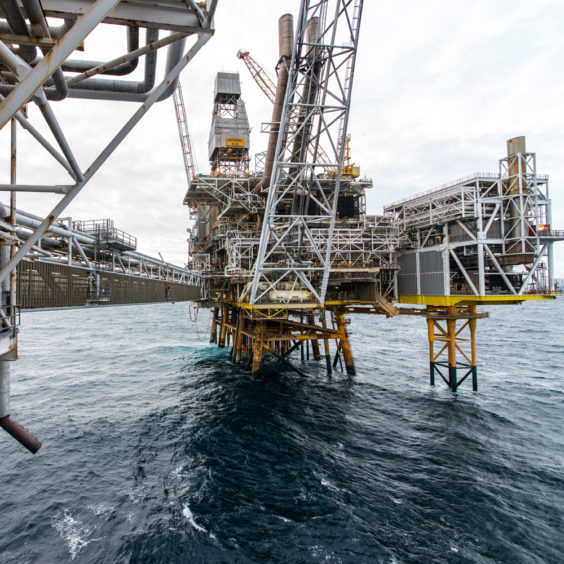
The industry regulator has launched a £1 million competition to help decarbonise offshore oil and gas production.
Managed by the Oil and Gas Authority (OGA), the initiative is designed to advance the widespread electrification of installations on the UK Continental Shelf (UKCS).
Organisers are looking for studies – be they technical, engineering or commercial – that will bring electrification projects a step closer to reality.
The winning ideas will be allocated a share of the £1m prize fund, with the goal of completing the proposed work by March 31 next year.
As it stands, North Sea platforms are powered using gas or diesel, accounting for around two thirds of oil and gas production emissions.
It is anticipated that powering installations using electricity, either from a cable to the shore or from a nearby windfarm, could axe CO2 emissions by between 2 and 3 million tonnes per annum (Mtpa).
That’s equivalent to the annual carbon emissions from households in a city the size of Liverpool.
In addition, the resulting power demand from offshore oil and gas electrification could potentially support up to 4 gigawatts (GW) of new offshore windpower capacity.
Andy Samuel, OGA chief executive, said: “Electrification of oil and gas installations is a vital part of industry’s licence to operate and to meet its North Sea Transition Deal emissions reduction targets. This is also a big opportunity for industry to support offshore wind expansion, with lasting infrastructure that will provide benefits beyond oil and gas, long into the future.”
The OGA competition follows the government’s commitment in the North Sea Transition Deal to support funding for early-stage offshore electrification studies by the end of the year.
Key results from the research will be published for others to benefit from and build on the ideas generated.
Greg Hands, UK Government’s energy and climate change minister, said: “Through our landmark North Sea Transition Deal, we are supporting the UK’s oil and gas industry in the transition to a lower carbon future. This £1 million investment for electrification projects demonstrates how we are delivering on these commitments, enabling the industry to develop the infrastructure it needs to decarbonise North Sea production.
“Not only will this help the oil and gas sector to reduce their emissions, this can also support new offshore wind capacity to help grow the UK’s offshore wind sector, supporting the shift to green technology and renewable energy in the UK.”
Platform electrification is a “key component” of the OGA’s vision for an integrated energy basin.
The OGA’s Energy Integration Report found that the UK Continental Shelf could – through a mix of platform electrification, carbon capture and storage, offshore wind and hydrogen – absorb up to 60% of the UK’s entire CO2 abatement needed to achieve net zero emissions by 2050.
Numerous North Sea firms are currently forging ahead with plans to electrify their offshore assets as scrutiny of the sector intensifies.
Jersey Oil and Gas recently revealed that its plans to electrify central North Sea platforms are “building momentum”.
Meanwhile, BP, Shell, TotalEnergies and Harbour Energy announced earlier this year that they were involved in a joint study into electrification of their central North Sea assets, as well as West of Shetland.
Thibaut Cheret, Oil and Gas UK (OGUK) emissions improvement manager, said:“This is an interesting opportunity at a time when the UK’s oil and gas industry is changing and already cutting its own emissions, with a view to halving them by 2030.
“We look forward to continue working closely with OGA to remove barriers to electrification and promote synergies with offshore wind developments.”
Recommended for you

